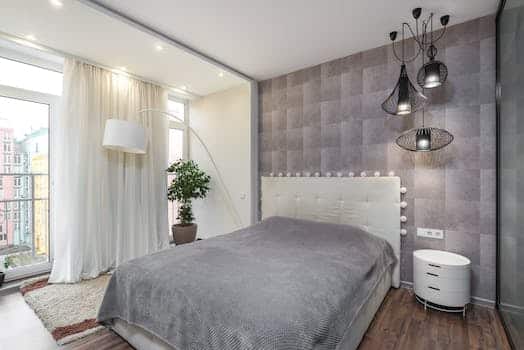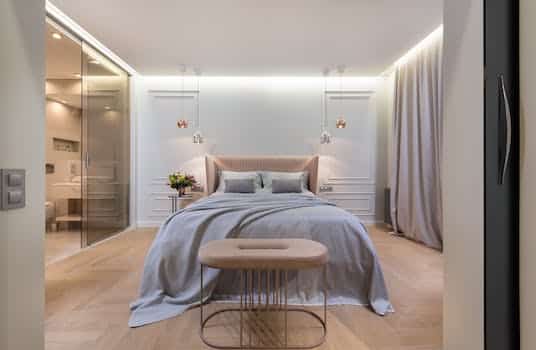When it comes to tax deductions, homeowners often wonder whether they can claim expenses related to their home furnishings. This article explores the question of whether home furnishings are tax deductible. Understanding the potential tax benefits of these expenses can help homeowners make informed decisions about their interior design choices. Let’s delve into the intricacies of deductibility and shed light on what homeowners can and cannot write off on their tax returns.
- 1. Introduction
- 2. Qualifications for tax deductions
- 2.1. Primary residence
- 2.2. Home office
- 2.3. Rental properties
- 2.4. Business use
- 2.5. Deductible expenses
- 3. Types of home furnishings that may be tax deductible
- 3.1. Furniture
- 3.2. Appliances
- 3.3. Home office equipment
- 3.4. Window treatments
- 3.5. Lighting fixtures
1. Introduction
When it comes to tax deductions, homeowners often wonder if they can claim their home furnishings as expenses. The answer to this question depends on various factors and understanding the tax laws. While some home furnishings may be eligible for tax deductions, it is essential to know the specific guidelines and limitations set by the tax authorities. This article aims to shed light on the topic of whether home furnishings are tax deductible, providing insights and information to help homeowners make informed decisions.
1.1. Understanding tax deductions
Tax deductions can be a valuable way to reduce the amount of taxes owed and potentially save money. One area where individuals may wonder if they can claim deductions is with home furnishings. While there are some situations where home furnishings can be tax deductible, it is important to understand the specific criteria and limitations.
In general, the Internal Revenue Service (IRS) allows deductions for expenses that are considered ordinary and necessary for a particular trade, business, or profession. This means that if home furnishings are used solely for business purposes, such as in a home office or rental property, they may be eligible for tax deductions.
However, if the home furnishings are used for personal purposes, such as in a primary residence, they typically do not qualify for tax deductions. It is important to keep in mind that the IRS has strict rules regarding what can be considered a deductible expense, so it is crucial to consult with a tax professional or refer to the IRS guidelines for specific information.
Additionally, even if home furnishings are used for business purposes, there are certain limitations and restrictions that apply. For example, the IRS may require that the furnishings be used exclusively for business activities, meaning they cannot be used for personal purposes at any time. There may also be limitations on the types of furnishings that can be claimed as deductions, and the amount that can be deducted may be subject to certain calculations or percentages.
In conclusion, while it is possible for home furnishings to be tax deductible in certain situations, such as when used for business purposes, it is important to thoroughly understand the specific criteria and limitations set forth by the IRS. Consulting with a tax professional is recommended to ensure compliance with tax laws and to maximize any eligible deductions.
1.2. Importance of home furnishings
Home furnishings play a crucial role in our lives, enhancing the overall aesthetics and functionality of our living spaces. They not only make our homes more comfortable and inviting but also reflect our personal style and preferences. From furniture and decor to appliances and lighting, every item contributes to creating a cozy and personalized environment.
Moreover, home furnishings are not just about aesthetics; they also serve practical purposes. The right choice of furnishings can optimize the use of space, provide storage solutions, and improve the organization of our homes. Additionally, they can enhance the functionality of different areas, such as the kitchen, bedroom, or living room.
In this article, we will delve into the topic of whether home furnishings are tax deductible. Understanding the tax implications of investing in home furnishings is essential for homeowners and renters alike. By exploring the various factors involved, we can gain insights into the potential tax benefits or limitations associated with these expenses.
1.3. Overview of article
Home furnishings refer to the various items and accessories that are used to decorate and furnish a living space. These can include furniture, curtains, rugs, lamps, artwork, and other decorative items. Many people wonder if the expenses incurred in purchasing home furnishings can be eligible for tax deductions. This article aims to provide an overview of the topic and explore the tax deductibility of home furnishings.
2. Qualifications for tax deductions
To determine if home furnishings are tax deductible, there are certain qualifications that need to be met. These qualifications vary depending on the specific circumstances and the tax laws of the country or state. Generally, home furnishings may be eligible for tax deductions if they are considered necessary for the business or work being conducted from the home.
One qualification is that the home furnishings must be used exclusively for business purposes. This means that if the furnishings are also used for personal reasons or for any other non-business activities, they may not be eligible for tax deductions.
Another qualification is that the home furnishings must be directly related to the business or work being conducted. For example, if the home office is used as a photography studio, the furniture, lighting equipment, and other relevant items used for photography purposes may be eligible for tax deductions.
It is important to keep detailed records and receipts of the home furnishings purchased, as proof of their use and cost. These records will be necessary when filing for tax deductions and may need to be presented to tax authorities if requested.
Additionally, the amount of the tax deduction may be limited to a certain percentage of the total cost of the home furnishings, depending on the tax laws in place. It is advisable to consult with a tax professional or accountant to ensure compliance with all regulations and to maximize potential tax deductions.
In conclusion, while home furnishings may be eligible for tax deductions, it is crucial to meet certain qualifications. These qualifications include exclusive business use and direct relevance to the business or work being conducted. Keeping thorough records and seeking professional advice are essential for accurately claiming tax deductions for home furnishings.
2.1. Primary residence
In order for home furnishings to be tax deductible, they must meet certain qualifications. These qualifications determine whether the expenses incurred on home furnishings can be claimed as tax deductions. Here are some key factors to consider:
1. Primary Residence: The home for which you are claiming the tax deductions must be your primary residence. This means that it is the place where you primarily live and consider your main home.
2. Personal Use: The home furnishings must be primarily used for personal purposes. If the furnishings are used for business or rental purposes, they may be subject to different tax rules.
3. Necessary and Ordinary: The home furnishings must be considered necessary and ordinary for your primary residence. This means that they should be typical items that are commonly used in a household, such as furniture, appliances, and decorations.
4. Reasonable Expense: The expenses incurred on home furnishings must be reasonable. This means that the cost of the furnishings should be within the normal range for similar items.
It is important to consult with a tax professional or refer to the relevant tax laws and regulations to ensure that you meet all the qualifications for claiming tax deductions on home furnishings.
2.2. Home office
To qualify for tax deductions on home furnishings, certain qualifications need to be met. The Internal Revenue Service (IRS) has specific guidelines that determine whether or not home office expenses, including furnishings, can be deducted. These qualifications include:
1. Exclusive and regular use: The home office area must be used exclusively for business purposes. It should not be a space that serves dual purposes, such as a guest room or a personal area for relaxation. Additionally, the office space should be regularly used for conducting business activities.
2. Principal place of business: The home office should be the primary location where you conduct most of your business or where you meet clients or customers. If you have another location where you conduct substantial administrative or management tasks, you may still be eligible for deductions, as long as the home office is used for regular face-to-face meetings.
3. Proportionate deduction: The amount of tax deduction you can claim for home furnishings will depend on the proportionate size of your home office compared to the overall size of your home. For example, if your home office occupies 10% of your total home space, you may be able to deduct 10% of the cost of qualifying home furnishings.
4. Necessity and ordinary: To be eligible for deductions, the home furnishings must be necessary and ordinary for your business. This means that the items should be commonly used in your line of work and essential for carrying out your business activities.
It is important to consult with a tax professional or refer to the IRS guidelines to ensure that you meet all the qualifications for tax deductions on home furnishings. By understanding and meeting these qualifications, you can potentially reduce your tax burden and maximize your deductions.
2.3. Rental properties
To qualify for tax deductions on home furnishings, certain qualifications need to be met. These qualifications are essential to ensure that you can claim deductions on your rental properties. Here are some key factors to consider:
1. Purpose of the Furnishings: The IRS allows tax deductions for home furnishings that are used exclusively for rental purposes. This means that the furnishings should be primarily used by tenants and not for personal use.
2. Rental Property Classification: Your rental property must be classified as a business for tax purposes. If you rent out part of your primary residence, you will need to allocate a portion of the expenses related to home furnishings for the rental space.
3. Time of Use: To claim tax deductions, the rental property should be available for rent for a significant portion of the year. If the property is only rented out for a few weeks or used primarily for personal purposes, you may not be eligible for deductions on home furnishings.
4. Expenses Documentation: It is crucial to maintain proper documentation of expenses related to home furnishings. This includes receipts, invoices, and any other relevant records that prove the cost of the furnishings and their usage for rental purposes.
5. Depreciation Rules: Home furnishings are typically considered depreciable assets, meaning their value decreases over time. You can claim deductions for depreciation on these assets based on the applicable IRS guidelines.
It’s important to consult with a tax professional or accountant who specializes in real estate to ensure you meet all the necessary qualifications for tax deductions on home furnishings for your rental properties.
2.4. Business use
When it comes to tax deductions, it is important for business owners to understand which expenses can be claimed. Home furnishings, such as furniture, may potentially qualify for tax deductions if they are used for business purposes. However, it is crucial to meet certain qualifications in order to claim these deductions.
The first qualification is that the home furnishings must be used exclusively for business purposes. This means that if the furniture is also used for personal reasons, it may not be eligible for tax deductions. It is recommended to keep detailed records and evidence to prove that the furnishings are solely used for business activities.
Another important qualification is that the expenses must be ordinary and necessary for the business. This means that the furniture should be considered essential for the operation of the business. If the furnishings are extravagant or luxurious, they may not be eligible for tax deductions.
Additionally, the business owner must have valid documentation and receipts for the home furnishings. It is important to keep track of all purchases and expenses related to the furniture. This will help in accurately calculating the deductible amount and provide evidence in case of an audit.
It is worth noting that tax laws and regulations can vary, so it is always recommended to consult with a tax professional or accountant to ensure compliance with the specific rules in your jurisdiction. By meeting the necessary qualifications and keeping proper documentation, business owners can potentially benefit from tax deductions on their home furnishings.
2.5. Deductible expenses
When it comes to tax deductions for home furnishings, there are certain qualifications that need to be met. The Internal Revenue Service (IRS) allows taxpayers to deduct certain expenses related to their homes, but not all home furnishings are eligible for deductions.
To qualify for tax deductions, home furnishings must be used solely for business or work-related purposes. This means that if you have a designated home office where you conduct business or work, you may be able to deduct the expenses of furnishing that space. However, if the furnishings are used for personal purposes, they are not eligible for tax deductions.
Additionally, the IRS requires that the expenses being deducted must be both ordinary and necessary. Ordinary expenses refer to those that are common and accepted in your industry or profession. Necessary expenses are those that are helpful and appropriate for your business or work.
It’s important to keep detailed records and receipts of your home furnishing expenses if you plan on claiming them as deductions. This will help you substantiate your claims and provide evidence to the IRS if needed.
In conclusion, while not all home furnishings are tax deductible, those used solely for business or work-related purposes may qualify for deductions. Meeting the qualifications set by the IRS and maintaining proper documentation are crucial when claiming these deductions.
3. Types of home furnishings that may be tax deductible
When it comes to tax deductions, homeowners often wonder if they can claim any expenses related to their home furnishings. While the general rule is that personal expenses are not tax deductible, there are certain situations where home furnishings may be eligible for a tax deduction.
1. Home Office Furniture: If you use a part of your home exclusively for business purposes, you may be able to deduct the cost of home office furniture. This includes items such as desks, chairs, filing cabinets, and bookshelves that are necessary for your work.
2. Medical Equipment: In some cases, certain home furnishings that are considered medical equipment may be tax deductible. This typically applies to items like adjustable beds, lift chairs, and specialized furniture prescribed by a healthcare professional.
3. Energy-Efficient Upgrades: If you make energy-efficient upgrades to your home, such as installing solar panels or energy-saving windows, you may be eligible for tax credits. While these may not directly deduct the cost of furnishings, they can indirectly offset the overall cost of home improvements, including new furniture.
It’s important to note that tax laws can be complex and subject to change, so it’s always advisable to consult with a tax professional or refer to the latest IRS guidelines to determine the specific eligibility and limitations for home furnishing tax deductions in your situation.
3.1. Furniture
When it comes to tax deductions, homeowners often wonder if they can claim any expenses related to their home furnishings. While most furniture purchases cannot be directly deducted from your taxes, there are certain types of home furnishings that may qualify for a tax deduction.
One category of home furnishings that may be tax deductible is office furniture. If you have a home office that is used exclusively for your business, you may be able to deduct the cost of any furniture purchased for that space. This includes desks, chairs, filing cabinets, and any other furniture necessary for your work.
Another type of home furnishings that may be eligible for a tax deduction is furniture used for rental properties. If you own a rental property and provide furnished accommodations, you can generally deduct the cost of furniture purchases as a business expense.
It’s important to note that in order to claim these deductions, you must meet certain criteria and keep detailed records of your purchases. Additionally, it’s always a good idea to consult with a tax professional or accountant to ensure you are eligible for any deductions and to properly navigate the tax laws.
In conclusion, while most home furnishings are not tax deductible, there are exceptions for certain types of furniture. If you have a home office or own rental properties, you may be able to claim deductions for office furniture or furniture used for rental accommodations. Always consult with a tax professional for accurate advice and guidance.
3.2. Appliances
When it comes to tax deductions, homeowners often wonder if they can claim any expenses related to their home furnishings. While certain types of home furnishings can be tax deductible, it is important to understand the specific criteria set by the Internal Revenue Service (IRS). Here are some common appliances that may be eligible for tax deductions:
1. Energy-Efficient Appliances: Homeowners who purchase energy-efficient appliances, such as refrigerators, dishwashers, or washing machines, may qualify for tax credits. The IRS offers these credits as an incentive for individuals to make energy-efficient choices that help reduce their overall energy consumption.
2. Home Office Equipment: If you have a dedicated home office space and use specific furnishings and equipment for your work, you may be able to deduct the expenses associated with those items. This could include office desks, chairs, computers, printers, and other necessary equipment.
3. Medical Equipment: In certain cases, if you have purchased medical equipment for your home, such as a wheelchair or a hospital bed, you may be eligible to claim it as a medical expense deduction. However, it is important to consult with a tax professional or refer to the IRS guidelines to determine if your specific situation qualifies.
4. Safety and Accessibility Modifications: If you have made modifications to your home to improve safety or accessibility for a disabled individual, such as installing ramps, grab bars, or wider doorways, you may be able to deduct these expenses as medical deductions or as expenses related to caring for a disabled person.
It is crucial to note that not all home furnishings are tax deductible. Regular furniture, decorative items, or general household appliances typically do not qualify for deductions. Additionally, it is recommended to keep detailed records and receipts of your home furnishing purchases, as well as consult with a tax professional to ensure you meet all the necessary criteria and requirements for claiming tax deductions.
3.3. Home office equipment
When it comes to tax deductions, many people are unaware that certain home furnishings can actually be claimed. If you have a home office, you may be eligible to deduct some of the expenses related to the furniture and equipment you use for work. These deductions can help reduce your overall tax liability and potentially save you money. However, it’s important to note that not all home furnishings qualify for tax deductions. To be eligible, the furniture and equipment must be used exclusively for your business or work purposes. Let’s explore some of the types of home office equipment that may be tax deductible.
1. Desks and Chairs: A suitable desk and chair are essential for a productive home office. If you use these items solely for your work and they are necessary for your business operations, you can generally deduct the cost of these furnishings.
2. Computers and Laptops: In today’s digital age, computers and laptops are vital tools for most businesses. If you primarily use your computer or laptop for work-related tasks, you may be able to claim a deduction for their purchase or lease costs.
3. Printers and Scanners: If you regularly need to print or scan documents for your business, the cost of printers and scanners can be deductible. Make sure to keep track of the expenses and retain the receipts.
4. Shelving and Storage Units: Having ample storage space is crucial for organizing your work materials. If you invest in shelving units or storage cabinets for your home office, you may be eligible for a tax deduction.
5. Lighting and Fixtures: Good lighting is essential for a comfortable and productive work environment. If you install specific lighting fixtures or make improvements to the lighting in your home office, you may be able to deduct the associated costs.
It’s important to consult with a tax professional or refer to the IRS guidelines to understand the specific requirements and limitations for claiming these deductions. By taking advantage of these potential tax deductions, you can make your home office more efficient while also benefiting from potential savings on your tax return.
3.4. Window treatments
When it comes to tax deductions, homeowners often wonder if their home furnishings can be included. While some home furnishings may be tax deductible, it is important to understand the specific criteria set by the Internal Revenue Service (IRS). One category of home furnishings that may be eligible for tax deductions is window treatments.
Window treatments, such as curtains, blinds, and shades, can serve both functional and decorative purposes in a home. They can help regulate the amount of natural light entering a room, provide privacy, and enhance the overall aesthetics. From a tax perspective, window treatments may qualify as a deductible expense if they are considered necessary for a home office or a rental property.
For a home office to qualify for tax deductions, it must meet certain requirements. The space should be used exclusively and regularly for business purposes and should be the principal place of business. If a homeowner uses a specific room or area in their home primarily for conducting business activities, they may be able to deduct a portion of the expenses associated with that space, including window treatments.
Similarly, if a homeowner rents out a property, they may be eligible to deduct certain expenses related to that rental property. Window treatments in a rental property can be considered a deductible expense if they are provided by the homeowner and are necessary for the tenant’s use and enjoyment of the property. It is important to keep records and receipts of these expenses to substantiate the deduction.
It is crucial to consult with a tax professional or refer to the IRS guidelines for specific rules and limitations regarding tax deductions for home furnishings. Although window treatments can potentially be tax deductible, it is important to ensure that they meet the criteria set by the IRS to avoid any potential issues with tax filings.
3.5. Lighting fixtures
Lighting fixtures are an essential part of any home furnishing. They not only provide illumination but also add to the overall aesthetic appeal of a space. When it comes to choosing lighting fixtures for your home, there are various types to consider.
1. Chandeliers: Chandeliers are grand and elegant lighting fixtures that are often the centerpiece of a room. They come in various designs, sizes, and materials, allowing you to find the perfect fit for your home decor.
2. Pendant Lights: Pendant lights are versatile fixtures that can be used in various areas of the home, including kitchen islands, dining tables, and hallways. They hang from the ceiling and provide focused lighting.
3. Wall Sconces: Wall sconces are mounted on the walls and can be used to create ambient lighting or accentuate specific areas of a room. They come in different styles, such as traditional, modern, and industrial.
4. Table Lamps: Table lamps are popular choices for adding both task and decorative lighting to a space. They can be placed on bedside tables, desks, or side tables to provide localized illumination.
5. Floor Lamps: Floor lamps are freestanding fixtures that can be used to brighten up a room or create a cozy reading nook. They come in various heights and styles, making them suitable for different areas of the home.
When selecting lighting fixtures for your home, it’s important to consider the functionality, style, and energy efficiency. Additionally, consult with a tax professional to determine if any of these lighting fixtures may be eligible for tax deductions as home furnishings.
Conclusion
In conclusion, home furnishings are generally not tax deductible. While there are certain exceptions and specific circumstances where deductions may apply, it is important to consult with a tax professional or refer to the IRS guidelines for accurate information on deductibility of home furnishings.






5 Comments
Ethelda Duleba
1 year agoThank you for providing this insightful post on tax deductions for home furnishings. It is crucial for individuals to explore every avenue available to optimize their savings, and understanding the potential tax benefits associated with home furnishings is certainly valuable. Expert advice and tips on maximizing deductions can greatly assist individuals in making informed decisions when it comes to their tax planning. I appreciate the opportunity to learn more about this topic and look forward to further exploring the possibilities of tax deductions on home furnishings.
Melinde Hourigan
1 year agoThank you for sharing this informative post about tax deductions on home furnishings. It is important for individuals to understand the potential tax benefits they can avail in order to optimize their savings. Expert advice and tips on maximizing these deductions would be greatly appreciated.
Sena Doig
1 year agoHey there! I stumbled upon this post and it caught my attention. Ive always wondered if I could claim tax deductions on my home furnishings. It would be awesome to optimize my savings! I could really use some expert advice and tips on how to maximize my deductions. Cant wait to learn more about it!
Carol Nassi
1 year agoAs a normal human visitor, I find the post on claiming tax deductions on home furnishings quite intriguing. The prospect of optimizing my savings through such deductions is quite appealing. I am eager to discover if I qualify for these deductions and how I can make the most of them to enhance my financial situation. Expert advice and tips on maximizing deductions would be highly appreciated. Thank you for providing such valuable information.
Paloma Siloum
1 year agoWow, this post couldnt have come at a better time! As a new homeowner, Ive been wondering if I can score some tax deductions on my home furnishings. It would be fantastic to optimize my savings while making my living space beautiful and comfortable. Im eager to discover the ins and outs of claiming these deductions and learn some expert advice on maximizing them. This is going to be a game-changer for me! 💪💰